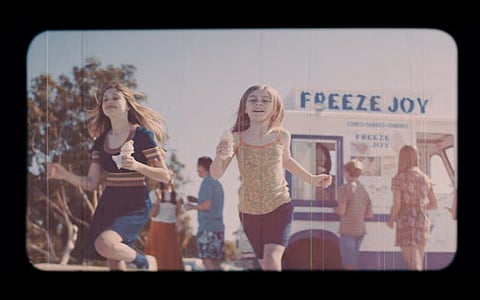
- Reviews
- Power List 2024
- Cannes 2024
- In-Depth Stories
- Web Stories
- News
- FC Lists
- Interviews
- Features
- FC SpecialsFC Specials

What's not to like in Voir – a collection of deeply personal, often insightful, always passionate, visual essays about cinema by six critics in a project that also happens to be helmed by David Fincher? Cinephiles drool at such things and the prospect of something with an academic bent getting the Netflix budget and scale is by virtue of its design bound to be quite pleasurable. I mean, something as small as the curtains of the big screen (the authors appear, as do other actors in reenacted scenes from their childhood in some of the episodes) opening to the theme of Lawrence of Arabia in "But I Don't Like Him", the third episode, is alone worth the binge, as Drew McWeeny takes us first into the Peter O' Toole character from the film, and then, into the theme of the piece: unlikeable protagonists, moving forward to Bonnie and Clyde, The Godfather, and finally, the entire career of Martin Scorsese.
Or the first episode itself, Sasha Stone's dreamy-eyed look back of watching Jaws as a ten-year old in Topanga Canyon, going back to it again and again – she saw it 40 times – with her sister while simultaneously mapping the pains and pleasures of growing up – "After that, nothing would be the same. Not summers, not movies, not beaches, and not me," notes the voiceover. (The release of Jaws is such a storied event; it gave birth to the summer blockbuster, and a geekdom that's male-dominated, so it's refreshing that we get to see the point of view of someone who was a fangirl among fanboys).
The opening credits is the stuff of wet-dreams, flickering with images from classic cinema accompanied by a ghostly whistle, all projected on an iris – which at one point overlaps with a moment from the eye slicing scene from Bunuel's Un Chien Andalou – both setting the tone for the series and justifying its title. As I said, what's not to like? And yet, Voir left me with a vague feeling of dissatisfaction that is applicable to the whole series, barring maybe the last one. There's nothing in it that I disliked. Could I have done without it? I think yes.
Let's take "The Duality of Appeal", an episode that finds an interesting angle to talk about the animation medium – and how it particularly restricts the creation of female characters – by probing our into our perception of beauty, but loses the focus. It reminded me of Abstract: the Art of Design, the Netflix non-fiction documentary, which I loved; but while that series dedicated close to an hour for each episode, this one lasts less than twenty minutes. Maybe that's one problem with the format. Voir tries to occupy a middle space between a YouTube video essay and a Netflix doc, and it doesn't always work. Perhaps animator Glen Keane unwittingly explains it when he describes the mystery of the 'appeal' in this episode: harmony (and the lack of it within the various segments of this series).
The episodes both resemble and differ from each other. The first three, for instance, follow an overarching theme of immoral, forbidden pleasures. But the shift from Stone's nostalgic free-fall into a time and place when Jaws released to Tony Zhou's clinical analysis of the workings of a revenge movie could prove to be jerky. Zhou's style that worked so well in the Every Frame a Painting videos feels a bit… dry when the analysis includes something as obvious as "Audiences are much more willing to accept violence when it's justified" when it quotes the guest interviewee, a film studies professor. Zhou pivots his treatise on Park Wan Chook's Sympathy for Lady Vengeance, but it dwells too much on narrative and almost nothing on film style.
Along with the authors' voiceover, the episodes combine newly shot scenes along with home movie style grainy footage and old photographs, of course, along with clips from different movies. Maybe it needed not harmony but more variation. Voir got me craving for something more abstract, something more 'cinematic'. Maybe they could've gone for different styles of visual essays, a somewhat bolder experiment: a Chris Marker style free association, or something like Mark Cousins makes, with a distinct stamp of the author. The only distinct stamp in Voir is that of being a Netflix product, shot and narrated in a certain way.
The last two episodes work better, for different reasons. Episode 5, that gives you a crash course on the evolving relationship between cinema and television, has a crispness and clarity. It's educative in way that doesn't get too overwrought while giving insights like why the lines between TV and cinema started blurring (Ans: the transition to digital, which meant that the visuals you saw on your TV are broadcast straight without any loss in quality).
Walter Chaw's "Profane and Profound" is powerful. It feels like a singular voice and yet manages to touch upon every single aspect of his experience that was rooted in a childhood memory: being dropped off by his parents at a local multiplex where he watched Walter Hill's 48 hours. Chaw, who grew up as a Chinese kid in a predominantly white area, saw that film with a friend, and what had seemed like a routine buddy cop action comedy became a profound life experience for him as he started watching it through the lens of race in America. Chaw's piece has the heft of a long form essay. I have never seen 48 hours and it made me feel like I did.